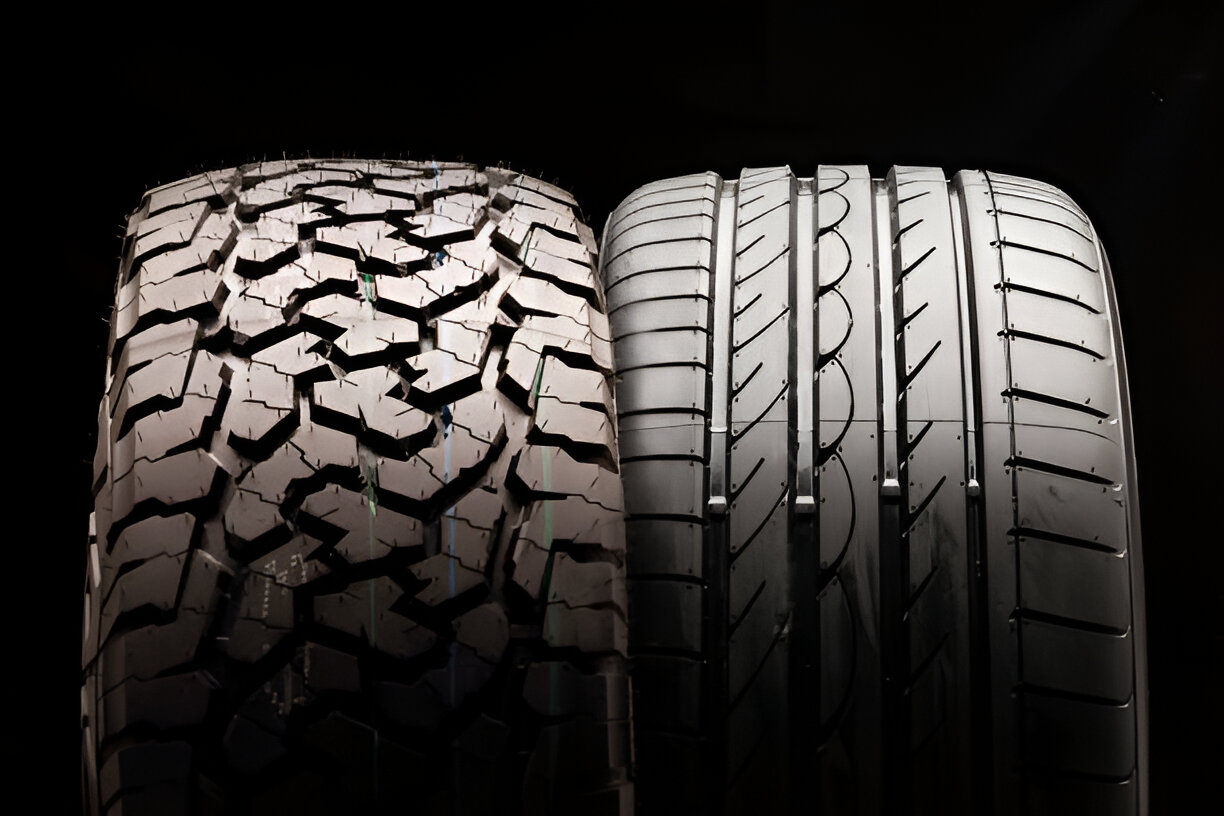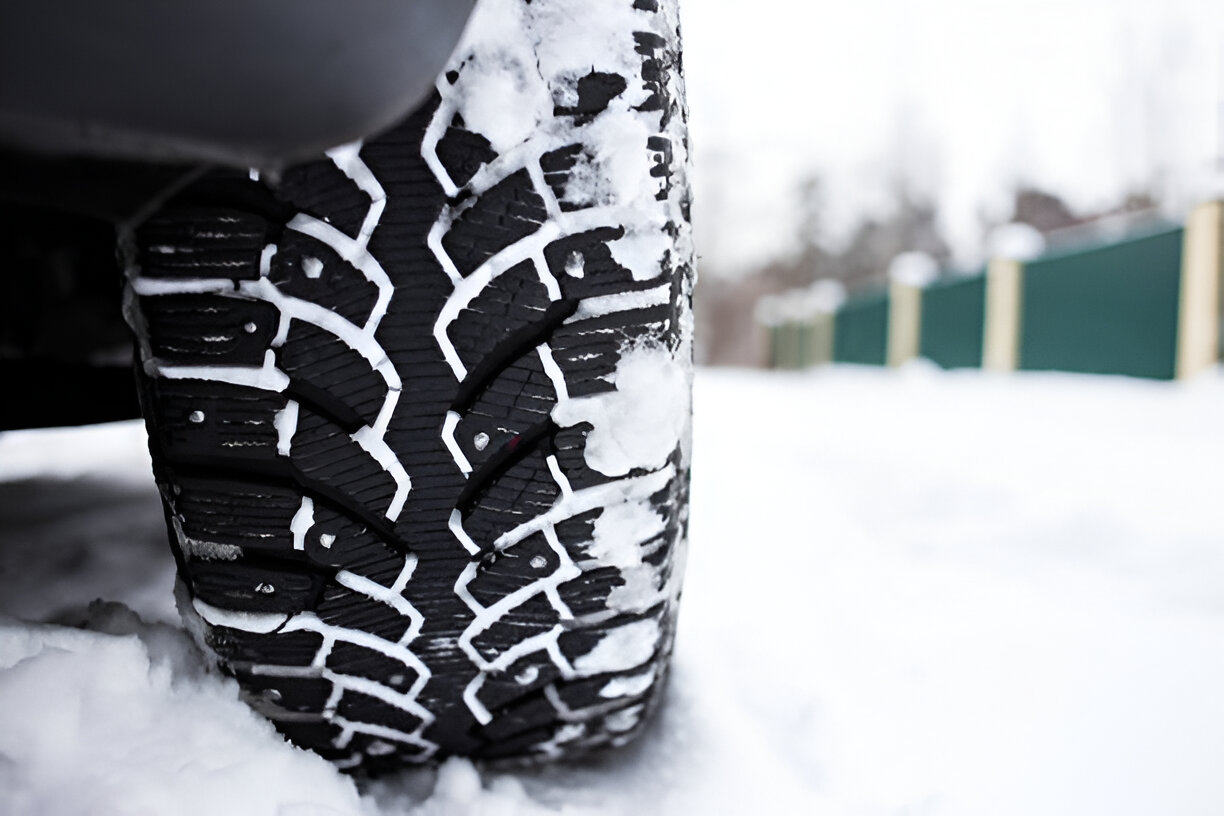Last Updated on October 25, 2024
Winter Tires vs. Fuel Efficiency- What You Need to Know to Optimize Bot
With fuel prices averaging $3.2 per gallon and climbing as high as $5 in some parts of the country, managing gas costs has become a top concern for many drivers. The prices per gallon are traditionally higher in the western and northern parts of the country. This is especially true in regions that get a lot of snowfall in the winter and freezing temperatures for months on end. But how do the winter tires impact the fuel economy? Here’s what you need to know.
How Do Winter Tires Affect Fuel Consumption?
1) Rolling Resistance
Rolling resistance is the friction between the tire and the road as the tire rolls. Winter tires have higher rolling resistance due to their deeper tread, aggressive patterns, and softer rubber compounds than summer or all-season tires due to their specialized features. All these factors contribute to increased resistance, which requires more fuel to maintain speed and acceleration.
2) Winter Tire Weight
Heavier tires increase the vehicle’s overall weight, directly affecting fuel consumption. Winter tires are often heavier because of their thicker tread and reinforced sidewall, making your engine work harder, especially when compared to lighter all-season or summer tires.
3) Winter tire tread Design and Pattern
Winter tires have deeper and more aggressive tread patterns to provide better traction in snow, ice, and slush. While it boosts safety, it does increase friction with the road surface, which can increase fuel consumption. On the other hand, summer or all-season tires with less aggressive patterns reduce rolling resistance, which helps to improve fuel efficiency in milder weather conditions.
4) Winter Tires Rubber Compound
Winter tires are made from specialized rubber compounds designed to stay flexible in cold temperatures. While this is great for improving grip on ice, it also increases rolling resistance, particularly on dry or wet roads that don’t require the same level of traction. The softer rubber also wears down more quickly, affecting fuel economy.
What Are The Actual Figures?
It depends on various factors, such as the displacement and power output of the engine, vehicle type, and tire size. The fuel consumption average values can increase by 5% to 15% when using winter tires. Mounting aggressive off-road tires, like 37-inch rubber, can increase the consumption by up to 25%.
Factors that Can Influence Winter Tire Fuel Efficiency
Understanding these variables can help drivers make more informed decisions about when and how to use winter tires without sacrificing fuel efficiency.
1) Driving Habits
Aggressive driving, including rapid acceleration, harsh braking, and high speeds, increases fuel consumption regardless of tire type. Winter tires are designed to provide better traction at lower speeds, so driving more conservatively in winter conditions not only improves safety but also helps to minimize fuel inefficiency. By adopting a more conservative driving style, drivers can reduce fuel inefficiency and extend the tire’s life.
2) Vehicle Weight
Heavier vehicles, like trucks and SUVs, naturally consume more fuel due to the extra energy required to move the additional weight. Adding heavier winter tires can further increase consumption, though lighter vehicles will experience a smaller impact on efficiency.
3) Tire Quality
Higher-quality winter tires often use advanced materials and construction techniques to reduce rolling resistance. While these premium tires are more expensive, the long-term savings in fuel consumption can offset the higher price.
4) Tire Wear
Due to their softer rubber compounds, winter tires wear out faster than all-season tires. As the tread wears down, rolling resistance may decrease slightly, but this comes at the cost of safety. Regularly monitoring tire wear ensures better fuel efficiency and safety.
How To Improve Fuel Efficiency With Winter Tires
- Choose Energy-Efficient Winter Tires: Look for low-rolling resistance tires with strong winter performance.
- Regular Tire Maintenance: Keeping your winter tires in good condition is crucial for maintaining fuel efficiency. This includes regularly checking tire pressure, which is known to drop in low temperatures, inspecting tread depth, and ensuring that tires are correctly aligned.
- Drive Smoothly: Avoid sudden accelerations and maintain a consistent speed to save on fuel.
- Remove Winter Tires When Not Needed: Once winter conditions have passed, switching back to all-season or summer tires will help improve fuel efficiency and reduce wear on winter tires.
Is It Worth Spending More Money On Fuel?
Of course, it is! While winter tires may reduce fuel efficiency, they offer unparalleled safety and traction in harsh conditions compared to all-season or summer tires. The slight increase in fuel consumption is a small price for the peace of mind that comes with knowing your vehicle is properly equipped.
By understanding how winter tires affect fuel consumption and taking steps to minimize that impact, you can strike a balance between safety and cost. Safety should always be the priority, and winter tires remain the best choice for secure driving during colder months.
-
Automotive Specialist










